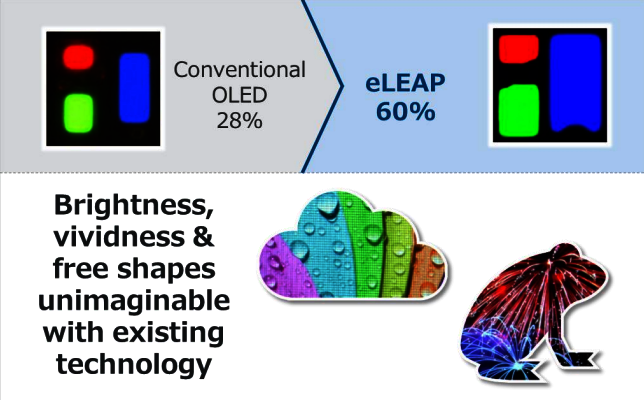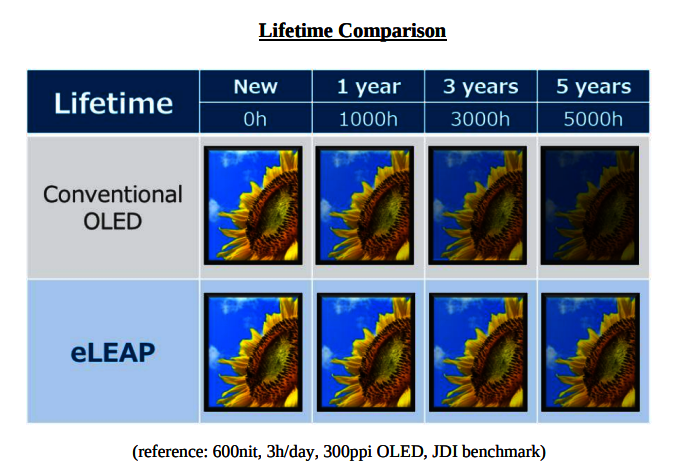Japan Display has just unveiled a new method of making OLED TV displays that promises to deliver twice as much brightness as existing models and with superior energy efficiency to boot.

The company’s technology is known as eLEAP, and would also dramatically improve the lifespan of OLED TV panels. Japan Display estimates its eLEAP OLED displays could last three-times longer than existing ones made by LG Display even with their higher brightness.
The best thing is this isn’t just some kind of theoretical concept done in a lab. The company says it’s ready to start producing samples of its eLEAP OLED displays by the end of the year, and that it will provide the technology to other display makers as well.
It said eLEAP will work with the latest 8th Generation display manufacturing facilities that promise to bring down the price of both bigger and smaller OLED TVs.
The key advantage of Japan Display’s eLEAP is its larger aperture ratio, which refers to how much of the space in each OLED pixel can be used to generate light. The larger the space devoted to producing light, the brighter the pixel will be. With conventional OLED displays, the aperture ratio is a mere 28%, but with eLEAP, Japan Display says it has expanded this to 60%.

Today’s existing OLED televisions, such as the new LG Electronics G2 TV, are already incredibly popular with consumers and reviewers alike thanks to the high level of precision and contrast they enable. LG has also made advances when it comes to brightness with this year’s displays.
However, OLED displays aren’t entirely perfect. They can’t reach the same high level of brightness as the most expensive LCD LED TVs, resulting in more reflections on the screen and poorer quality pictures in well lit rooms. In order to reach higher brightness, LG Display’s OLED panels include an extra white LED that can impact the colour range a little. Its displays also have shorter lifespans than LCD panels and there is also the possibility of burn-in, though recent improvements have mimimised the chances of this happening.
Japan Display’s eLEAP technology promises to fix all of these issues, with up to double the brightness of existing displays, meaning OLED would be much closer to the highest-end LCD TVs. With higher brightness, there would be no need for a white pixel, which means an improved colour range. eLEAP also uses less power, reducing the heat and therefore lessening the chances of burn-in.

Until now, most people have been looking to Samsung Display’s QD-OLED technology as the future of OLED. But if Japan Display’s eLEAP works as promised, we might just have a superior technology on our hands. Watch this space!